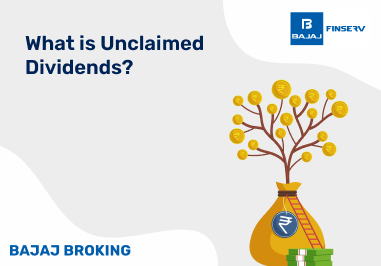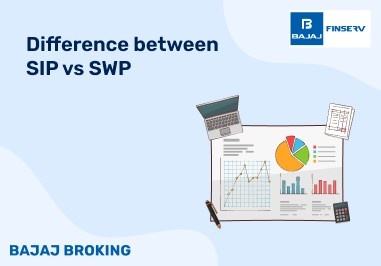Understanding the Flag and Pole Pattern in Technical Analysis
Considered to be an analytical approach, the flag and pole pattern is a reliable and effective way to predict the trends and price movements of the market.
It is a widely recognised chart formation in technical analysis. This pattern usually appears during a period of consolidation following a sharp upward or downward price movement (the pole).
The consolidation will form a flag-like shape, and once the pattern breaks, it usually indicates a continuation of the prior trend. This makes it a useful tool for spotting out potential breakouts in both bullish and bearish markets.
Overview of Flag Pole Pattern
As stated earlier, the flag and pole pattern is a key concept in technical analysis that traders use to identify potential price movements. In addition, as the name suggests, it consists of two main parts: the pole and the flag.
The Pole: This part is created by a sharp price movement (either a significant increase or decrease) in a short period. The pole generally indicates a strong momentum in the market that eventually highlights any aggressive buying or selling activity.
The Flag: After the pole, the market enters a consolidation phase, which is represented by the flag. During this phase, the price typically moves sideways or slightly downward. This movement is seen as a pause. In other words, it means that it is allowing the market to catch its breath before continuing in the direction of the pole.
Traders look for this flag pole pattern to predict the next price movement. More often than not, they predict that the price will continue in the same direction as the pole.
Additional Read: What is the Shooting Star Candlestick Pattern
How Does Flag and Pole Pattern Work?
Here’s a step-by-step guide on how flag and pole pattern works :
Sharp Price Movement (Formation of the Pole)
The pattern starts with a sharp price movement, either upward (bullish) or downward (bearish). This is known as the pole and indicates strong market momentum due to high buying or selling pressure.
Consolidation Phase (Formation of the Flag)
After the sharp movement, the price enters a consolidation phase. This phase is considered a “pause” or temporary correction. Here, traders take profits or the market absorbs the price change.
Breakout from the Flag
The key signal comes when the price breaks out of the flag in the direction of the original trend (either upward or downward). This breakout typically occurs with increased trading volume, thereby indicating that the market is ready to resume the trend established by the pole.
Entry and Exit Points
Traders usually enter the market once the breakout is confirmed. They set stop-loss orders right below the flag for bullish patterns or above the flag for bearish patterns. This helps them to manage risk in case the breakout fails.
Types of Flag Pole Pattern
The flag and pole pattern comes in two different forms, entirely depending on the market trend direction. Nevertheless, both patterns are used to identify the continuation of an existing trend:
Bullish Flag and Pole Pattern
Found in uptrending markets, this pattern signals that the price is likely to continue rising after a brief consolidation phase. Traders use this to anticipate further upward movement after the price stabilises for a short time.
Bearish Flag and Pole Pattern
Seen in downtrending markets, this pattern suggests that after a temporary pause, the price is expected to resume its downward movement. It helps traders to prepare for further drops in price following the consolidation.
Key Characteristics of Flag and Pole Pattern
Some of the most unique characteristics that make the flag and pole pattern useful for traders include:
Volume Behaviour
Low volume during the flag indicates a pause in the market, while a sudden increase in volume confirms the breakout. This is clearly a reliable signal for traders to enter or exit positions.
Measured Moves
The height of the pole often helps traders predict the potential price target right after a breakout. This makes it a sensible tool for setting exit points and profit targets.
Trend Continuation Signal
Both types of flag patterns are continuation patterns; meaning they indicate the potential of the current trend persisting. This gives traders confidence in following the overall market direction rather than expecting a reversal.
How does the Flag and Pole Pattern Work in the Stock Market?
If we specifically talk about the Indian stock market, understanding the flag and pole pattern can help traders identify exactly when the prices are likely to continue moving in a certain direction. Here’s how traders use it:
Entry Points
Traders generally buy or sell when the price breaks out of the flag, following the original trend. Traders can start leveraging good trading platforms that support quick execution.
Trend Continuation
The flag and pole pattern shows that the price is likely to keep moving in the same direction after the flag, especially in a strong market. It indicates that the earlier trend is likely to continue after consolidation.
Profit Targeting
The height of the pole helps traders estimate where they can take profits right after a breakout. For example, if a stock breaks out from a bullish flag pattern, traders may target a price based on the pole’s height. By identifying the pattern, traders can engage in trades that can positively impact their trading accounts.
Stop Loss Placement
This is highly important. Setting stop-loss orders below the flag for bullish patterns or above for bearish patterns can limit potential losses. It is extremely essential in this volatile market.
Market Sentiment
This is another non-negotiable. Being aware of current market sentiment and economic indicators, like government policies or inflation rates, is super crucial. This is because they can strongly affect the reliability of this pattern.
Significance of the Flag and Pole Pattern in Trading
Besides knowing the flag and pole pattern meaning, it is important to understand the value that it brings to the table. Here are 8 solid reasons that state how this pattern holds a considerable amount of importance for traders:
Risk Management
By spotting the clear entry and exit points, traders can manage their risk efficiently. Setting stop-loss orders based on the flag pattern helps traders to limit potential losses while also maximising profits.
Accurate Entry/Exit Points
Traders can actually find good points to enter and exit trades. This helps to reduce potential risks and losses.
Trend Confirmation
The flag and pole pattern is indeed a reliable indicator that a strong trend is likely to continue. When traders spot this pattern, they gain confidence that the momentum will persist. Eventually, it allows them to make more informed trading decisions.
Volume Backed Predictions
The pattern often coincides with increased trading volume, which can eventually validate the trend. A significant rise in volume during the formation of the flag and a subsequent breakout makes the pattern’s reliability even stronger.
Versatility Across Markets
This pattern is applicable in various markets, including forex, stocks, and commodities. Its versatility makes it an excellent tool for traders who are working with different asset classes.
Psychological Insights
The flag and pole pattern clearly shows the market psychology. If seen closely, it shows periods of consolidation followed by renewed buying or selling pressure. Understanding this entire psychology inside out can help traders predict market movements more effectively.
Target Price Setting
The height of the pole gives an easy method for estimating potential price targets right after a breakout. This helps traders to set realistic profit goals, which is obviously again useful in fast moving markets.
Easier Recognition
This is quite interesting. The distinct visual structure of the flag and pole pattern makes it easier for traders to spot in charts. This clarity allows both beginners and experienced traders to quickly identify potential trading opportunities.
How Can Traders Use The Flag And Pole Pattern To Make Trading Decisions?
Traders can use the flag and pole pattern to find the best times to enter their trades (entry points). It will help them to align their trades with the current market trends and give them signals when to act.
Once again, when the price forms a flag after a strong move, traders expect it to break out in the same direction. Here, they analyse the flag’s shape and watch for breakouts to decide when to buy or sell. This flag pole pattern allows traders to benefit from the ongoing price movements, by using the pole’s height to set their respective profit goals. By understanding this pattern, traders can improve their overall strategy and level up the performance of their trading accounts.
Additional Read: Difference Between Demat and Trading Account
Limitations and Risks of the Flag and Pole Pattern
While the flag and pole pattern is quite helpful, it comes with its own set of downsides. Regardless, it is important to be aware of these potential risks when managing your trading account to avoid significant losses. Below are a few risks that you need to keep in mind:
Limitations
| Risks
|
False Breakouts
| Sometimes the price may break out. Yet again, it may quickly reverse. This can lead to major losses.
|
Market Conditions and Volatility
| This is the most effective in strong trending markets and less reliable in sideways markets. Moreover, high volatility can create a blurred view/distort the pattern recognition.
|
Short-term Focus
| The flag and pole pattern works best only for short- to medium-term trades. It may not be effective in long-term trades.
|
Volume Dependency
| In case there is a lack of sufficient trading volume, the pattern might not be reliable or credible.
|
Requires Confirmation
| Traders need to wait for confirmation before they act out.
|
Conclusion
Learning to spot the flag and pole pattern can help traders make smarter decisions in the market. However, it is not just about recognising the pattern, but knowing when to act and when to wait. If you have made it this far, you are already ahead in using technical analysis to improve your trading strategy.
Now, it’s time to apply this knowledge in real markets, test it in your trading account, and fine-tune all your approaches. Needless to say, remember that patterns do not guarantee profits, but they do offer valuable insights. The key is to figure out how to read those signs, act wisely, and make informed decisions.
Disclaimer: Investments in the securities market are subject to market risk, read all related documents carefully before investing.
This content is for educational purposes only. Securities quoted are exemplary and not recommendatory.
For All Disclaimers Click Here: https://bit.ly/3Tcsfuc















